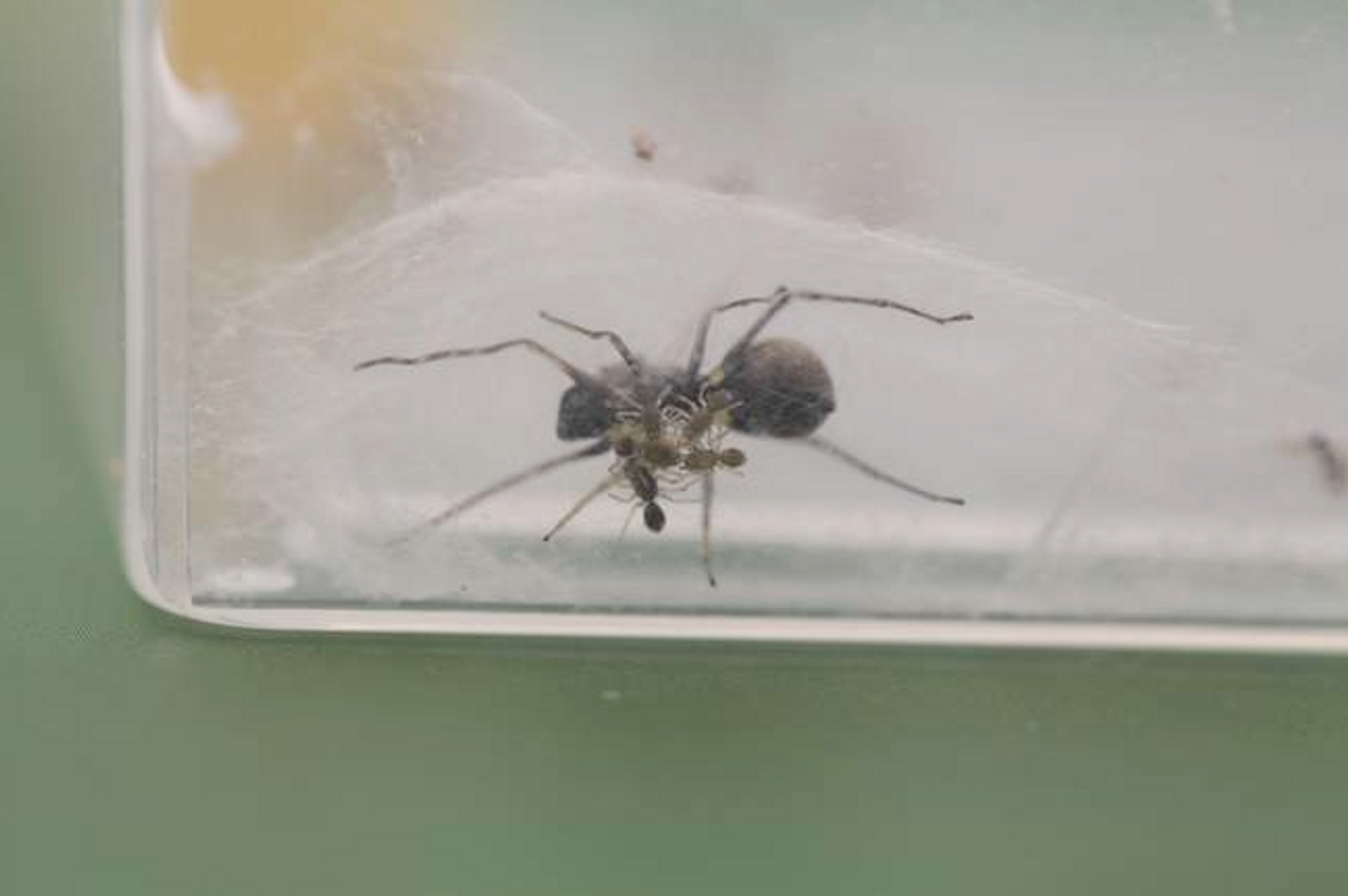This Spider Species Nourishes its Young with 'Spider Milk'
Spiders are well-known for their eight-legged stature and creepy web-spinning behavior, but despite everything we think we know about them, it seems we still have much to learn.
A team of researchers was observing a particular species of spider known as Toxeus magnus when they noticed that several smaller spiders were gathering unusually close to one of the larger ones. Upon taking a closer look, they realized they were witnessing mammalian behavior in the arachnids: a mother was nurturing her young with what could only be described as spider milk. The findings are published in the journal Science.
Image Credit: Rui-Chang Quan
As it would seem, it’s not entirely unheard of to witness this level of maternal care in a non-mammalian animal species, but most spider species (apart from social spiders) are solitary organisms that can’t be bothered with family obligations of this nature.
Astonished by their findings, the curious researchers collected some of the spiders and brought them back to the lab where this behavior could be studied more closely. After the mother’s eggs hatched, neither the hatchlings or the mother left the nest. Regardless, the hatchlings grew larger, which denoted how they were receiving nourishment from somewhere in the nest.
Related: Spiders may use electric fields to go ballooning
At one point, one of the researchers noticed a smaller spider clinging on to the mother’s underside in what appeared to be behavior akin to suckling. A closer look under the microscope revealed a semi-white droplet oozing from the mother’s abdomen, which supported the idea that she was indeed producing a type of spider milk for nourishing her younglings.
An analysis of the fluid revealed that it was up to four times more protein enriched than mammalian milk, but it remains a moot point as to whether the substance can actually be categorized as a type of milk or not. For all we know, it could be something else entirely.
Regardless, the curious researchers wanted to know what would happen to the younglings if they didn’t receive their mother’s nourishment. They blocked the substance-secreting area of the mother’s abdomen and waited to see what would happen. Perhaps unsurprisingly, the younglings that didn’t receive the nutritious substance didn’t grow and died within ten days.
Related: Are spiders really omnivores?
The results indicate that this so-called ‘spider milk’ is critical to the early development of the young spiders, much like milk would be in many mammalian animal species. More importantly, this is the first known instance of a spider species partaking in this type of behavior, which raises other questions about the species and whether other spiders participate in similar conduct.
Without a doubt, this research will send a ripple effect down the scientific community, inspiring other researchers to learn more about the nutritious fluid excreted by Toxeus magnus and to learn whether this behavior is more widespread than we think. But only time will tell…
Source: Popular Science, The Atlantic, Science










